Measuring samples in the transmission configuration provides some potential that cannot be addressed by the traditional backscattering coupling with a microscope. Although transmission Raman Spectroscopy (TRS) is not new, it has recently attracted an increasing interest, because of the potential combination of high power NIR lasers and dedicated accessories that allow the analysis of samples with this geometry.
Initially developed for pharmaceutical applications, TRS needs diffusing materials, such as tablets. It also works well for capsules and other translucent and diffusing materials —not only in pharmaceutical field—needing whole sample analysis. Application examples can be found in a range of domains, such as polymers or biomaterials (food, tissues). It can be used effectively to measure samples through the packaging.
Transmission Raman Spectroscopy
Over the past few decades, Raman spectroscopy has gone through remarkable hardware improvements. Nowadays, interfacing a microscope to a Raman spectrometer to analyze objects down to the sub-micron level is very common. However, in certain cases, the information given by the coupling with the microscope is too limited because it focuses on a very small volume of a sample, near to the surface, and may give incomplete information in case the sample is quite heterogeneous.
When bulk measurements of heterogeneous samples are needed, TRS offers an interesting alternative. By collecting the signal at the opposite of the laser illumination, the Raman spectrum achieved from the transmitted light will represent the sample in its totality and gives an answer to the sub-sampling problem (Figure 1).
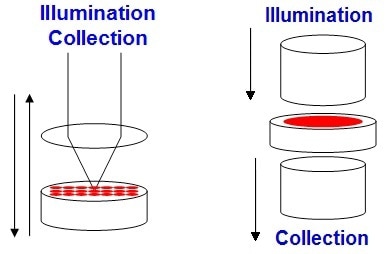
Figure 1. Geometry of the transmission measurement (right) as opposed to the backscattering mode (left).
Conversely, backscattered measurements, particularly when coupled to a microscope, may give partial information. For instance, pharmaceutical tablets are usually coated and backscattering measurements will mostly account for the coating. Illustrated in Figure 2 is the transmission and backscattered Raman spectra of an anti-inflammatory Advil tablet: the blue spectrum represents the overwhelming presence of TiO2 – anatase form attested by the peak at 145 cm-1 - and sugar, which are the key ingredients of the coating. In contrast, the transmission spectrum is more complicated: in addition to the Raman peaks of anatase – coming from the coating— the peaks of the other compounds located in the core, for example, the API (ibuprofen) are seen.
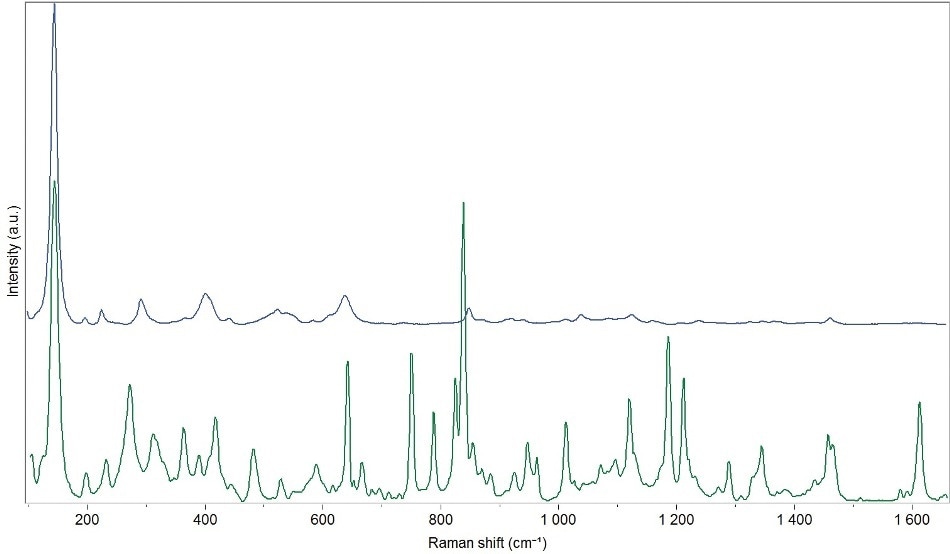
Figure 2. Backscattered (blue) and transmission (green) Raman spectra of an anti-inflammatory (Advil) tablet
Transmission Raman Spectroscopy (TRS) for Pharmaceutical Applications
Quantitative Evaluation and Calibration Method
It is very important to monitor the active pharmaceutical ingredient (API) within the formulation to make sure that the formulation dosage is correct. As transmission Raman spectra of capsules or tablets well represent the whole sample and are not sensitive to local variations, it is possible to make quantitative determinations of the various constituents.
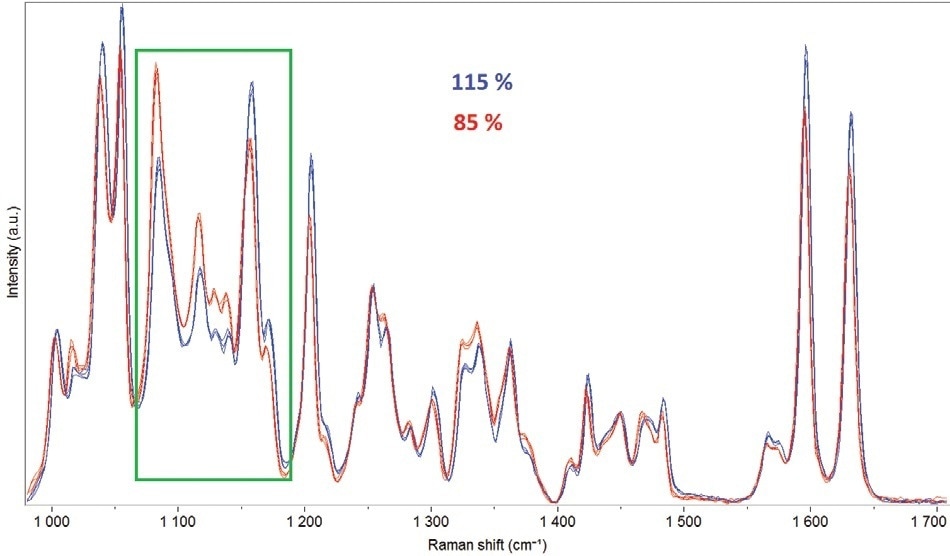
Figure 3. Transmission spectra of tablets with two different amounts of API (85 and 115 % of the target value).
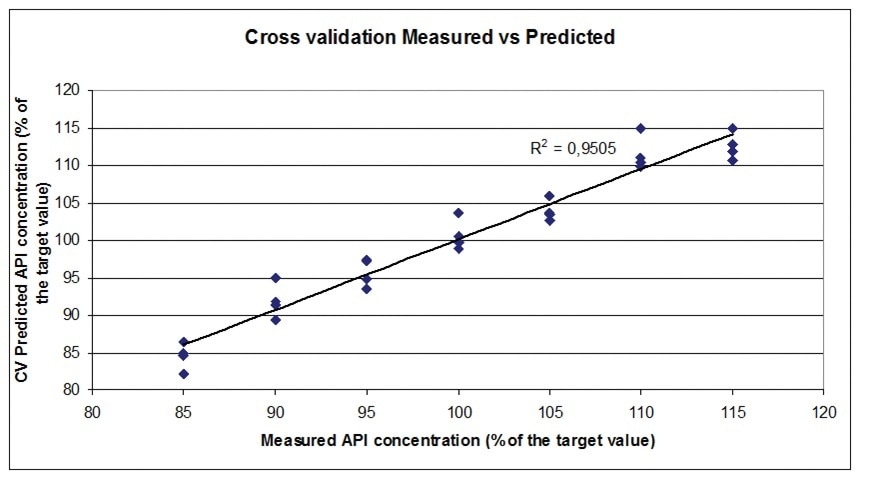
Figure 4. Cross-validation results obtained after the PLS calibration of a set of tablets formulated with various amounts of API around the target value.
By measuring a set of calibrated reference samples in transmission, and applying appropriate chemometrics algorithms (such as PLS – partial least squares), a calibration method can be built which can be applied on unknown test samples to get quantification data. Figure 3 shows the spectral variations observed in transmission spectra, with amounts of API ranging from 85% to 115% around the target value (equivalent to 21.2 and 28.7 % of the total weight). Figure 4 illustrates the cross-validation results related to the calibration of the set of tablets, demonstrating the method’s capabilities to provide acceptable quantitative results.
Polymorphism
Many active ingredients have numerous polymorphic forms, with just one of them being the preferred form to be formulated in the drug. It is, therefore, crucial to control which form is present within the mixture. As Raman spectroscopy is non-invasive and very chemically selective to distinguish polymorphs, it is well adapted to determine which form(s) are present within capsules or tablets.
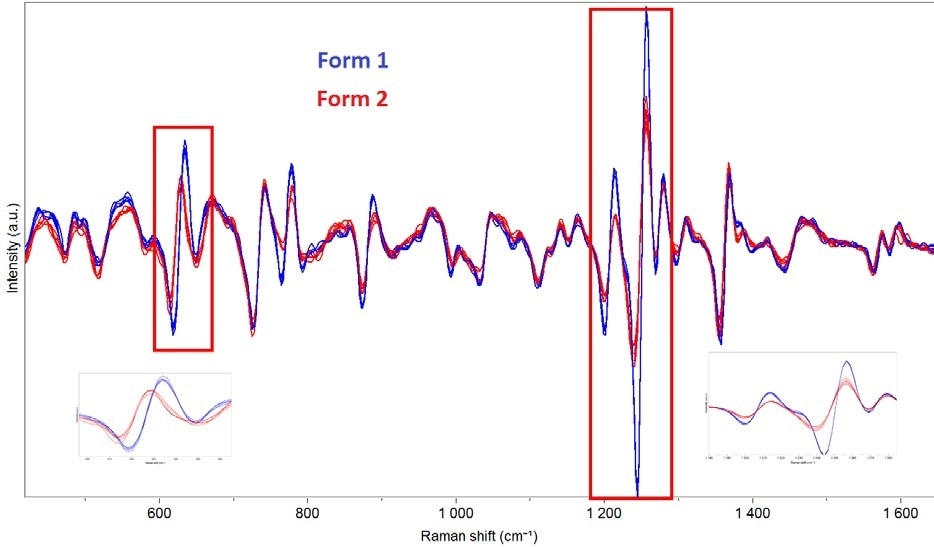
Figure 5. Derivative spectra of capsules containing Form 1 and Form 2 of the Active ingredient.
Obvious differences can be observed, which demonstrates the ability of discrimination of the polymorphs in formulations. Furthermore, the proportion of each form can be quantified to detect the presence of the undesired form down to low levels (estimated at 2% of form 2 in form 1 in this case).
Analysis of Fat Composition in Food without Sample Preparation
In food, the fatty acid composition dictates a variety of aspects with respect to food quality. For instance, trans-fat consumption elevates the risk of health problems and is thus submitted to regulations in many countries.
Variation in fatty acid composition was established between the different fat layers (inner and outer) of adipose tissues. In that regard, the ability to get an averaged spectrum of a bulk sample is essential if global information is needed.
Such averaged information is provided by transmission Raman spectroscopy. Adipose tissues of veal, lamb, and pork chops were measured: using transmission Raman spectroscopy, samples of various thicknesses and sizes were analyzed without any sample preparation.
Raman spectra provide multiple indications regarding the sample composition. For instance, trans-fatty acids can be readily observed from the spectra: the peak at 1668 cm-1 is directly related to the trans-configuration of the C=C double bond of fatty acids.
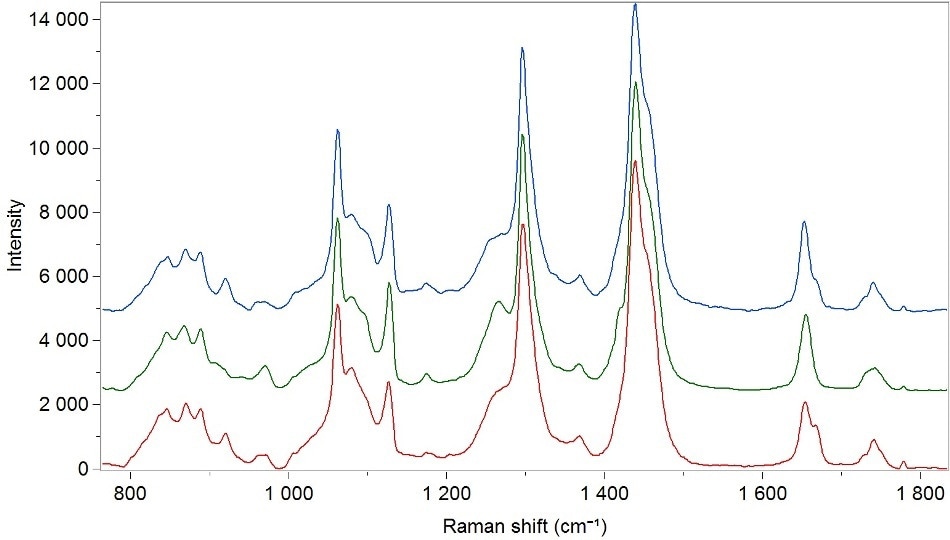
Figure 6. Transmission Raman spectra of adipose tissues from different species (lamb, pork, veal) using the transmission accessory operating at 785 nm.
Similarly, Raman spectra could be used to obtain quantitative information about the fatty acid profiles. As shown by the score plot in Figure 7, classification of species based on the Raman signature of their adipose tissues is also possible.

Figure 7. Principal component analysis score plot of samples of lamb, pork, and veal adipose tissues.
New Applications for Transmission Raman Spectroscopy
Polymers
Transmission Raman Spectroscopy is particularly well adapted to pharmaceutical applications; however, it might be effectively adapted to different sample types as well.
Polymer samples are also good candidates for this method. Represented in Figure 8 is the transmission Raman spectra of polymer materials comprising of a 2-layer polyethylene – polypropylene sample, exhibiting the spectral features of both materials.
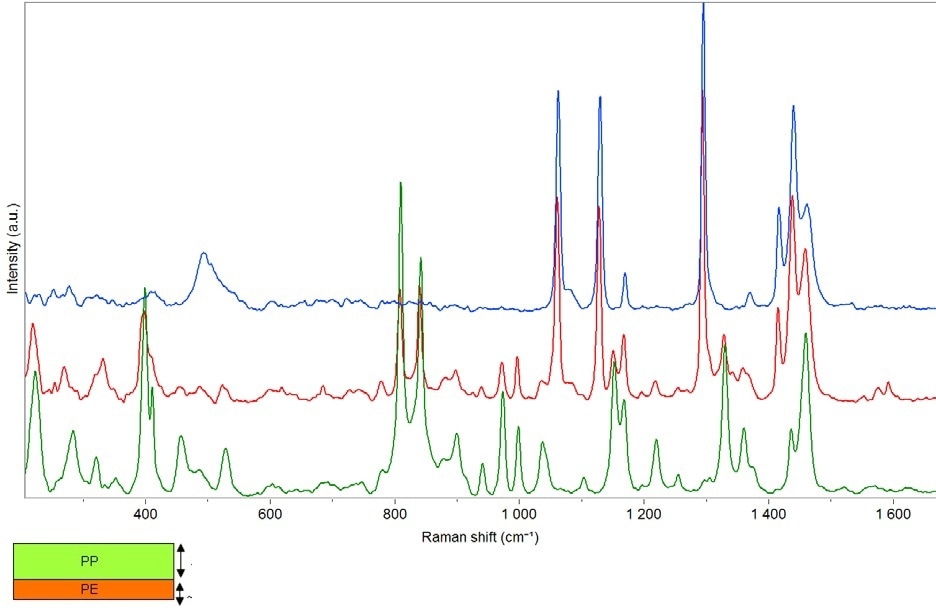
Figure 8. Transmission spectra of polymer materials: polyethylene, polypropylene, and a bi-layer sample made of a 1.5 mm polypropylene layer and a 0.75 mm polyethylene one.
Such a method can then be visualized for the quality-control of polymer samples: this can include a quantification step of the various components and/or layers.
Measurement through Packages
As explained in the previous examples, transmission is the preferred geometry of analysis when bulk measurements are needed. It might also be taken into account when the content of a packaged material has to be analyzed without uncovering the package. The spectrum of a shower gel measured through the PET package is illustrated in Figure 9. In this example, the PET contribution is less, making this measurement technique ideal for the gel’s quality-control.

Figure 9. Transmission spectra of a shower gel: only the gel, the gel through the package and the PET package.
This technique might be used to evaluate the stability of products in their original packaging over time, without any need to transfer a sub-sample into any vial – with the risk of transferring a non-representative fraction of the products or introducing contamination.
Summary
The transmission design has been illustrated as the technique of choice whenever Raman spectral information of a bulk material is needed. It has already demonstrated its utility for pharmaceutical applications since tablets or even powder mixtures are good candidates for this measurement mode. Conversely, transmission Raman might be applied effectively to other types of samples such as bio-tissues, polymers, or any translucent material, and can be envisaged for assessing the product content inside a package. Furthermore, since TRS offers a global spectral information of the quantified sample, it will be a technique of choice when quantitative evaluation of mixtures is required.
Sources and Further Reading
- K. Buckley, P. Matousek, J. Pharm. Biomed. Anal. 55, 645-652 (2011). ü
- J. Johansson, A. Sparén, O. Svensson, S. Folestad, M. Claybourn, Appl. Spectrosc. 61, 1211-8 (2007).
- Heidi Najbjerg, Nils Kristian Afseth, Jette F. Young, Hanne C. Bertram,ü Mona E. Pedersen, Stine Grimmer, Gjermund Vogt and Achim Kohler, Monitoring cellular responses upon fatty acid exposure by Fourier transform infrared spectroscopy and Raman spectroscopy, Analyst, 136, 1649–1658, 2011.
- Beattie, J. R. et al., 2006, Prediction of Adipose Tissue Compositionü Using Raman Spectroscopy: Average Properties and Individual Fatty Acids, Lipids, v. 41, n°3, p. 287 – 294.
- Afseth, N. K., V. H. Segtnan, B. J. Marquardt, and J. P. Wold, 2005,ü Raman and near-infrared spectroscopy for quantification of fat composition in a complex food model system: Applied Spectroscopy, v. 59, p. 1324-1332.
- Jonas Johansson, Staffan Folestad, Christoffer Abrahamsson, Tomasü Svensson and Stefan Andersson-Engels, NIR News, 17(4), 2006

This information has been sourced, reviewed and adapted from materials provided by HORIBA.
For more information on this source, please visit HORIBA.